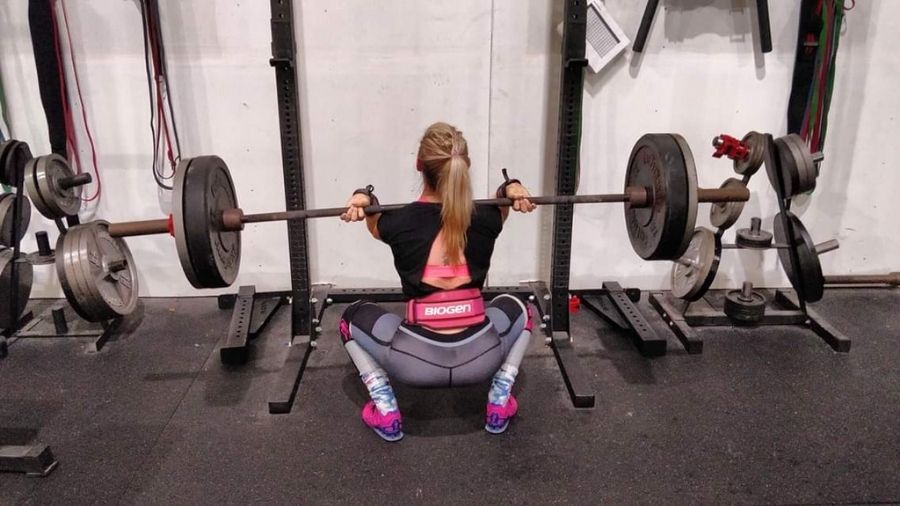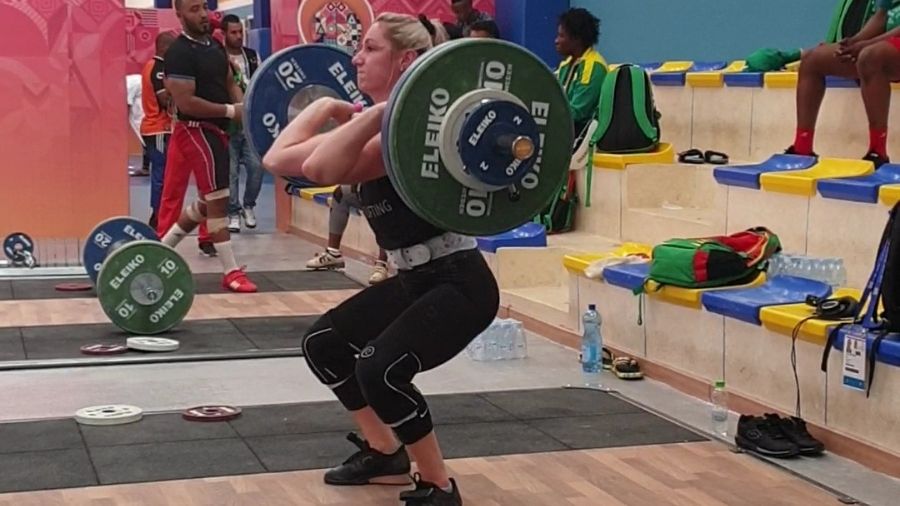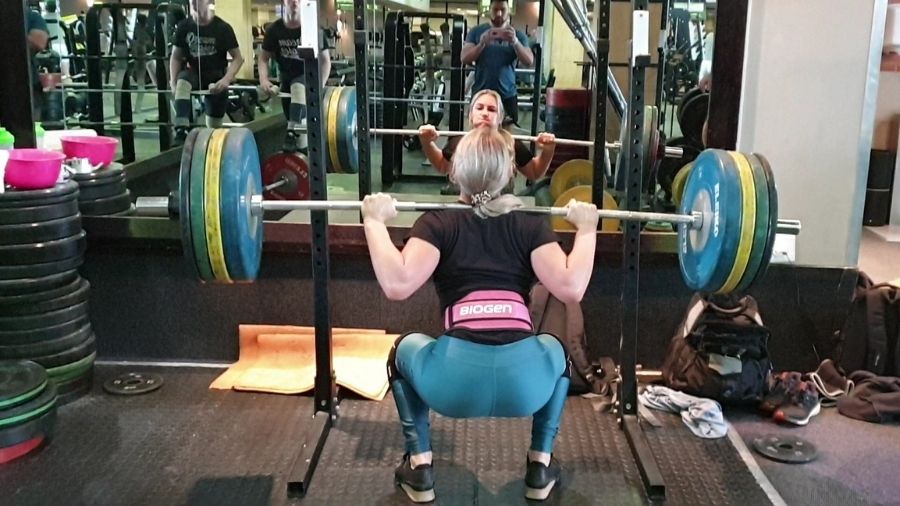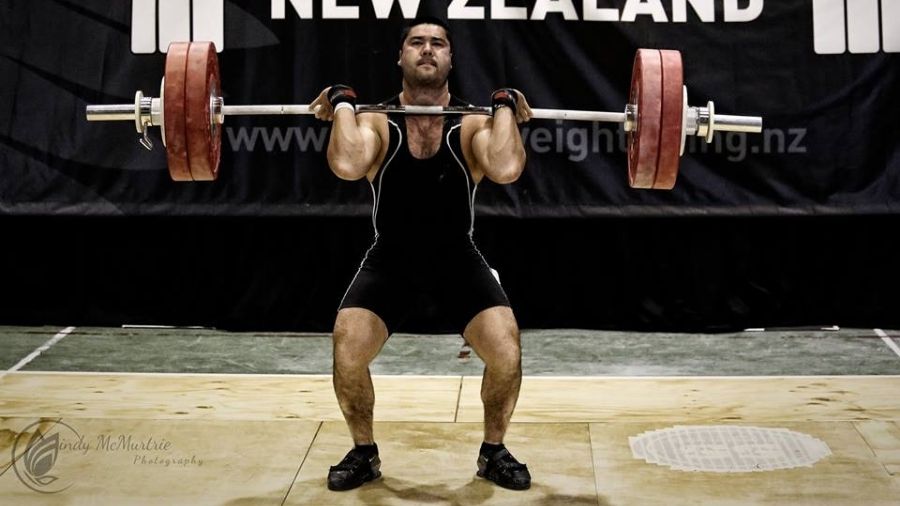The age-old debate between front squats vs. back squats. Many lifters opt for the back squat and treat the front squat like the kid picked last in PE class. But this may not be warranted, and the front squat can be more valuable than once thought.
The back squat is best for developing leg strength and building muscle of the glutes. Front squats may be better for quadriceps development due to greater muscle activation.
I’m going to break down the front squat vs. back squat debate over multiple categories so once and for all, we can have a clear understanding of which variation to use and why.
Table of Contents
- Front Squat vs. Back Squat Muscles Worked
- Front Squat vs. Back Squat For Strength
- Front Squat vs. Back Squat For Mass
- Front Squat vs. Back Squat For Glutes
- Front Squat vs. Back Squat For Athletic Performance
- Front Squat vs. Back Squat For Olympic Weightlifters
- Front Squat vs. Back Squat For Vertical Jump
- Front Squat vs. Back Squat Ratio
- Is The Front Squat or Back Squat Better?
- Frequently Asked Questions
Front Squat vs. Back Squat Muscles Worked

Both the front squat and back squat work the same muscles but differ to varying degrees. These main muscles are the quadriceps, glutes, and erector spinae [1]. The calves and hamstrings are also activated during the squat, but not to the same extent.
When subjects lifted 70% of their back squat and front squat 1RM, respectively, we see similar muscle activation of the quadriceps, hamstrings, and erector spinae [2] even though they lifted lighter loads during the front squat.
When lifting above 70% 1RM, we see front squats elicit greater activation of the vastus medialis, the inner quadriceps muscle known as the teardrop [1]. Interestingly, when front squats and back squats are both performed with the 80% front squat load, the quadriceps show greater force production than the back squat [6].
Overall, heavier front squats may be better for quadriceps development than back squats due to greater muscle activation.
Front Squat vs. Back Squat For Strength
If you’re picking between the front and back squat for pure strength development of the legs, the back squat is superior. The number one reason is simply the fact you can use greater absolute loads [1].
Strength developed is most influenced by intensity [3]. That is, lifting heavy loads. For example, in untrained subjects, 3 x 10 at 75% 1RM results in superior strength gains than 4 x failure at 30% 1RM [4]. In resistance-trained subjects, 3 x 8-12 at 70-80% 1RM in the back squat resulted in a 50% greater improvement in 1RM compared to the 3 x 25-35 at 30-50% 1RM [5].
Therefore, lifting heavier loads when back squatting will result in more significant lower body strength gains. That doesn’t mean you cannot get stronger legs only front squatting. You have a higher ceiling when using the back squat.
Front Squat vs. Back Squat For Mass

When packing on muscle mass, the key mechanisms are mechanical tension and metabolic stress [8]. That is lifting heavy loads through a full range of motion and performing enough reps for the build-up of by-products from anaerobic metabolism, which is associated with the “burn.”
The critical programming variable is volume. Mainly the number of sets and reps performed in a week. There is a clear dose-response relationship between volume and muscle growth, meaning the greater the volume, the greater the muscle growth [9].
Considering all of this, the back squat is likely better for building leg mass than the front squat. It allows you to use heavier loads (mechanical tension), perform more reps as the upper back is not a limiting factor (metabolic stress), and perform more overall volume.
However, suppose your goal of the workout is to trash your quads. In that case, front squats can be a viable substitute for the back squat due to the potentially greater quadriceps activation.
Front Squat vs. Back Squat For Glutes

Targeting the glutes for strength and muscle growth, the back squat is the clear winner. We see that the back squat elicits approximately 13% greater gluteus maximus activation than the front squat [7].
This is due to the forward lean of the trunk when back squatting compared to front squatting. This greater forward lean increases hip flexion in the bottom position resulting in greater peak hip extension force than the front squat [6].
Front Squat vs. Back Squat For Athletic Performance
Athletic performance does not care what exercises you use. Athletic performance is about using the right exercises for the desired adaptation you are targeting. Since athletes are not competing in strength sports, either the front or back squat are good options.
I have used only the front squat with rugby athletes that couldn’t back squat and vice versa. They still get stronger. Athletes can use even the leg press successfully to improve athletic performance. You can’t go wrong with either the front or back squat.
Front Squat vs. Back Squat For Olympic Weightlifters

Mona de Lacey, International Weightlifter, and coach like to think of the front squat transferring best to the clean and jerk and the back squat transferring best to the snatch. The torso position of the squats matches each competition lift.
Olympic Weightlifters will perform both the front and back squat as the front squat is used during the clean. The back squat develops raw leg strength to create a strength reserve. That is, if you can back squat 200 kg, your front squat will generally increase with it.
Some Weightlifters will front squat more often than they back squat if they have a large discrepancy between the two lifts. If the front squat is close to the back squat in terms of 1RM, Weightlifters will usually back squat more often.
Front Squat vs. Back Squat For Vertical Jump
Both the front squat and back squat improve vertical jump to a similar extent [10]. Either squat variation is a good choice. Vertical jump performance is about more than squat strength or maximum strength.
It’s about optimizing the individual force-velocity profile [11]. That is, finding the right balance between force and velocity for your individual make-up. A simple force-velocity profile test as part of the My Jump 2 mobile app will provide you with this information.
Front Squat vs. Back Squat Ratio

International Weightlifter Mona de Lacey states that the front and back squat’s general difference is 20-30 kg. That is, if you can back squat 200 kg, you should be able to front squat between 170-180 kg.
The research tends to support this ratio where the subject’s front squat 1RM averaged 105% of bodyweight, and back squat 1RM averaged 138% of body weight [1].
If your front squat is well under your back squat, that usually indicates you have a limitation in upper back strength.
Is The Front Squat or Back Squat Better?
Whether the front squat or back squat is better depends on your training goals and what you enjoy. For pure strength development, the back squat is better. If your goal is to build massive quads, the front squat might be better, but the back squat is also a great choice.
For glute development, the back squat is the clear winner. For every other performance attribute, you can’t go wrong with either squat variation.
Frequently Asked Questions
Is The Front Squat Harder Than The Back Squat?
The front squat is more challenging than the back squat. It challenges your upper back to the point where it is your main limitation for loading. It also requires front rack mobility that many individuals struggle with.
Do Front Squats Work Different Muscles Than Back Squats?
Front squats don’t work different muscles to the back squat. But it does potentially activate the quadriceps to a greater extent compared to the back squat.
Do Front Squats Increase Back Squats?
From my and others’ experiences, front squats don’t increase back squats. However, back squats do increase front squats.
References
1. Yavuz, H. U., Erdağ, D., Amca, A. M., & Aritan, S. (2015). Kinematic and EMG activities during front and back squat variations in maximum loads. Journal of sports sciences, 33(10), 1058-1066.
2. Gullett, J. C., Tillman, M. D., Gutierrez, G. M., & Chow, J. W. (2009). A biomechanical comparison of back and front squats in healthy trained individuals. The Journal of Strength & Conditioning Research, 23(1), 284-292.
3. Schoenfeld, B. J., Grgic, J., Van Every, D. W., & Plotkin, D. L. (2021). Loading recommendations for muscle strength, hypertrophy, and local endurance: A re-examination of the repetition continuum. Sports, 9(2), 32.
4. Ogasawara, R., Loenneke, J. P., Thiebaud, R. S., & Abe, T. (2013). Low-load bench press training to fatigue results in muscle hypertrophy similar to high-load bench press training. International Journal of Clinical Medicine, 4(02), 114.
5. Schoenfeld, B. J., Peterson, M. D., Ogborn, D., Contreras, B., & Sonmez, G. T. (2015). Effects of low-vs. high-load resistance training on muscle strength and hypertrophy in well-trained men. The Journal of Strength & Conditioning Research, 29(10), 2954-2963.
6. Krzyszkowski, J., & Kipp, K. (2020). Load-dependent mechanical demands of the lower extremity during the back and front squat. Journal of Sports Sciences, 38(17), 2005-2012.
7. Neto, W. K., Soares, E. G., Vieira, T. L., Aguiar, R., Chola, T. A., de Lima Sampaio, V., & Gama, E. F. (2020). Gluteus maximus activation during common strength and hypertrophy exercises: A systematic review. Journal of sports science & medicine, 19(1), 195.
8. Schoenfeld, B. J. (2010). The mechanisms of muscle hypertrophy and their application to resistance training. The Journal of Strength & Conditioning Research, 24(10), 2857-2872.
9. Schoenfeld, B. J., Ogborn, D., & Krieger, J. W. (2017). Dose-response relationship between weekly resistance training volume and increases in muscle mass: A systematic review and meta-analysis. Journal of sports sciences, 35(11), 1073-1082.
10. Peeni, M. H. (2007). The effects of the front squat and back squat on vertical jump and lower body power index of Division 1 male volleyball players. Brigham Young University.
11. Samozino, P., Edouard, P., Sangnier, S., Brughelli, M., Gimenez, P., & Morin, J. B. (2014). Force-velocity profile: imbalance determination and effect on lower limb ballistic performance. International journal of sports medicine, 35(06), 505-510.
